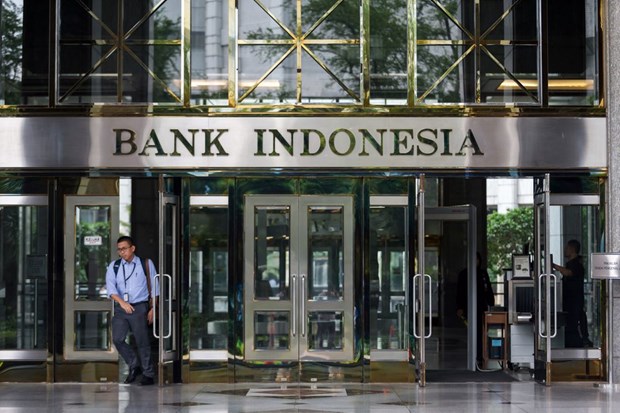Indonesia’s foreign debt growth slows in Q4 last year
Indonesia's foreign debt was recorded at 404.3 billion USD at the end of the fourth quarter last year, comprising public debt (government and central bank) of 202.9 billion USD, and private debt, including state-owned enterprises, of 201.4 billion USD.
 A man exits the Bank Indonesia headquarters in Jakarta. (Photo: Bloomberg)
A man exits the Bank Indonesia headquarters in Jakarta. (Photo: Bloomberg)Jakarta (VNA) – Indonesia's foreign debt was recorded at 404.3 billion USD at the end of the fourth quarter last year, comprising public debt (government and central bank) of 202.9 billion USD, and private debt, including state-owned enterprises, of 201.4 billion USD.
Indonesia’s foreign debt decelerated to 7.7 percent year-on-year (yoy), from 10.4 percent yoy in the previous quarter, according to the Bank Indonesia (BI).
The government’s foreign debt totalled 199.9 billion USD in the fourth quarter of 2019, up 10.3 percent yoy. The growth was supported by an influx of foreign capital to the domestic government securities market and the issuance of dual currency global bonds, specifically in the Euro and US dollar.
These conditions mirrored solid investor confidence in Indonesia’s economic outlook and attractive financial markets, as well as less uncertainty in global financial markets.
The largest portion of the government’s foreign debt was directed towards productive sectors that could promote economic growth and boost public welfare, such as the human health and social work activities sector, which accounted for 19.1 percent of the total debt; the construction sector, 16.6 percent; the education sector, 16.2 percent; the public administration, defense and compulsory social security sector, 15.4 percent; and the financial and insurance sector, 13.3 percent.
Meanwhile, private foreign debt grew 6.5 percent yoy, down from 10.8 percent yoy during the last quarter.
The debt was dominated by the financial and insurance; electricity, gas, and water supply; manufacturing; and mining and drilling sectors, amounting to 76.9 percent of the total private foreign debt.
Indonesia has maintained a healthy foreign debt structure supported by the application of prudential principles in its management.
By the end of last year, foreign debt made up 36.1 percent of Indonesia’s gross domestic product (GDP). The structure continued to be dominated by long-term debt, accounting for 88.3 percent of the total foreign debt./.













